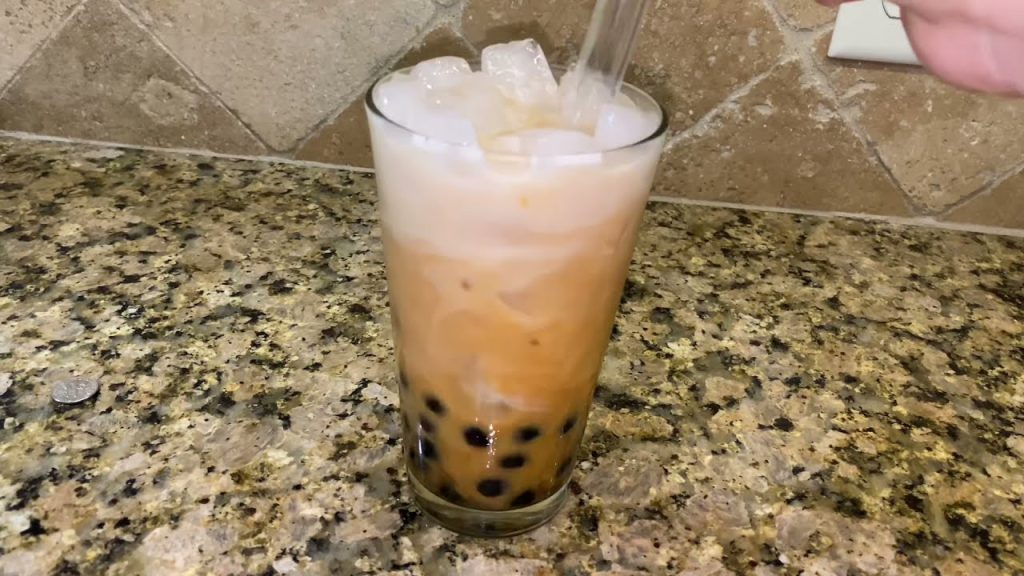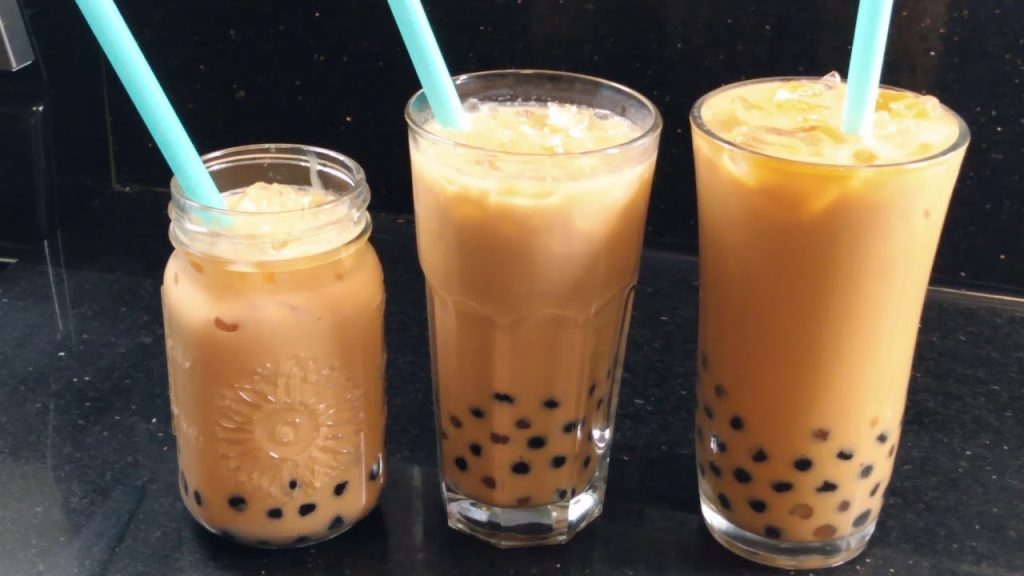Thai tea infused with milk and boba pearls has taken the coffee world by storm over the past few years. With its complex flavors and unique textures, Thai tea with boba offers something new and exciting for adventurous caffeine seekers. While it may seem like just the latest trendy drink, Thai tea truly deserves a closer look to understand what makes it so special. This blog post will delve into the history and flavors of Thai tea with boba, examine what sets it apart from other tea beverages, and provide recommendations for how to make the perfect cup of this unique and satisfying drink.
What Is Boba?
Boba, also known as tapioca pearls or bubble tea, is a chewy and sweet addition to many popular Asian drinks. These small black balls are made from cassava root starch and have a slightly gummy texture. Originally from Taiwan, boba became a popular addition to drinks such as milk tea in the 1980s before spreading to other countries around the world.
The term “boba” is derived from the Chinese slang for breasts, as early versions of the drink had small white pearls that resembled them. Nowadays, boba can come in a variety of flavors and colors, including classic black tapioca pearls, fruit-flavored boba, and even popping boba filled with juice.
What Is Thai Tea With Boba?

Thai tea with boba is a combination of two popular elements: Thai iced tea and boba pearls. Thai iced tea, also known as cha yen or cha nom yen in Thailand, is made with strongly-brewed black tea, condensed milk, and sometimes spices like star anise or cardamom. The resulting drink is creamy, sweet, and often has an orange hue due to the addition of food coloring.
When combined with boba pearls, Thai iced tea becomes Thai tea with boba – a unique and delicious beverage that offers both rich flavors and fun textures. The boba pearls add a chewy element to the drink, making it more satisfying to consume.
History Of Thai Tea With Boba
Legend has it that it all started at the famous Chun Shui Tang tea room in Taichung. Picture this: a dude named Liu Han-Chieh visiting Japan in the 80s and noticing that coffee was served cold. Light bulb moment. He decided to serve Chinese tea cold too, and it was a game-changer. Fast forward to a staff meeting, and one brave soul named Lin Hsiu Hui got the genius idea to drop some tapioca balls into her tea. It was love at first sip and soon became the star of the menu.
See more : Does Thai Tea Have Caffeine? What You Need to Know?
Another story is the Hanlin Tea Room in Tainan claims they’re the true bubble tea pioneers. Their owner Tu Tsong-he stumbled upon some white tapioca balls at a local market and was inspired to mix them with tea. Also, pearl tea” was born.
The bubble tea craze has even made its way into Google’s heart. On January 29, 2023, they dedicated a doodle to celebrate this tasty concoction. So whether you’re Team Chun Shui Tang or Team Hanlin Tea Room, one thing is clear – bubble tea is here to stay, and we can’t get enough of it.
Ingredients In Thai Tea With Boba
Make your own Thai Tea with Boba at home with these simple ingredients:
- Boba: Just boil 6 cups of water and add 1 cup of large tapioca pearls, cooked in a separate pot with 1/2 cup of sugar.
- Thai Tea: Steep 1 cup of Thai tea leaves in 5 cups of water. Add 1 cup of sugar and 1 cup of evaporated milk.
How To Make Thai Tea With Boba?
Want to learn how to make the perfect Thai Tea with Boba? We’ve got you covered. Follow these simple steps:
Step 1: Let’s make the Boba.
- In a deep pot, bring 6 cups of water to a boil.
- Add the tapioca pearls and let it boil again.
- Stir occasionally to break up clumps and simmer for 15 minutes.
- Turn off the heat and let it sit for another 15 minutes.
- Check the pearls by tasting one. If it’s not translucent, simmer for another 10-15 minutes.
- Drain and rinse the pearls under cold water to cool them down.
Step 2: Time for the Thai Tea.
- Combine tea leaves and water in a saucepan.
- Bring to a simmer and cook for 10 minutes.
- Add sugar, dissolve it, and cook for another 5 minutes.
- Turn off the heat and let the tea steep for 15-20 minutes.
- Strain the tea into a pitcher and add ice to cool it down.
See more : Discover How Much Caffeine is in Thai Iced Tea? A Quick Guide
Step 3: Let’s assemble our drink.
- Put a couple tablespoons of the cooked tapioca pearls into a cup.
- Add 1/2 cup of ice.
- Pour the Thai tea almost to the top.
- Add some evaporated milk, give it a stir, and serve with a straw.
Tips And Tricks For Making Thai Tea With Boba Perfectly
- Use a fine mesh sieve or cheesecloth to strain the tea leaves for a smoother texture.
- For a stronger tea flavor, steep the tea leaves longer or add more leaves.
- Adjust the amount of sugar based on personal preference. Some may prefer a sweeter drink while others may prefer it less sweet.
- When cooking the boba pearls, make sure not to overcook them as they can become mushy.
- To add an extra layer of flavor, try adding spices such as star anise or cardamom to the Thai tea mixture.
How To Serve Thai Tea With Boba?

It’s the perfect accompaniment to a spicy Thai green curry or simply enjoy it on its own as a sweet dessert. Now, we know straws aren’t the most eco-friendly option, but they’re necessary to scoop up those delightful pearls in your drink. That’s why we recommend getting yourself a reusable stainless steel or glass straw from Boba Green. And if you prefer, you can always use a good ol’ spoon.
How To Store Thai Tea With Boba?
Here’s a handy trick to keep your tapioca balls soft and bouncy overnight. Just prepare them beforehand and immerse them in a sugar syrup. It’s the same method bubble tea shops use to keep their boba fresh.
To make the sugar syrup, boil sugar and water in a saucepan. Once your pearls are ready, place them in the syrup and store them in an airtight container. They’ll stay good for up to 36 hours, but be aware that they’ll start to harden in the middle after that.
As for the tea itself, whether it’s in powder or leaves form, you can store it for a long time as long as you keep it dry and in an airtight container. Remember to keep it away from sunlight to prevent oxidation caused by heat.
If you already have Thai tea boba that’s been made and you want to store it, you can refrigerate it. However, be aware that it won’t taste as good as when it was freshly made. That’s why we recommend boiling the boba only when you’re ready to enjoy your drink.

Ronald B Gamrot is the owner of Silverking Brewery, one of the most successful craft breweries in North America. He started the business from scratch in his garage, and it has since grown into a multimillion-dollar operation. Ronald is passionate about brewing delicious beer and providing top-notch customer service. He is a respected member of the brewing community and often speaks at industry events.